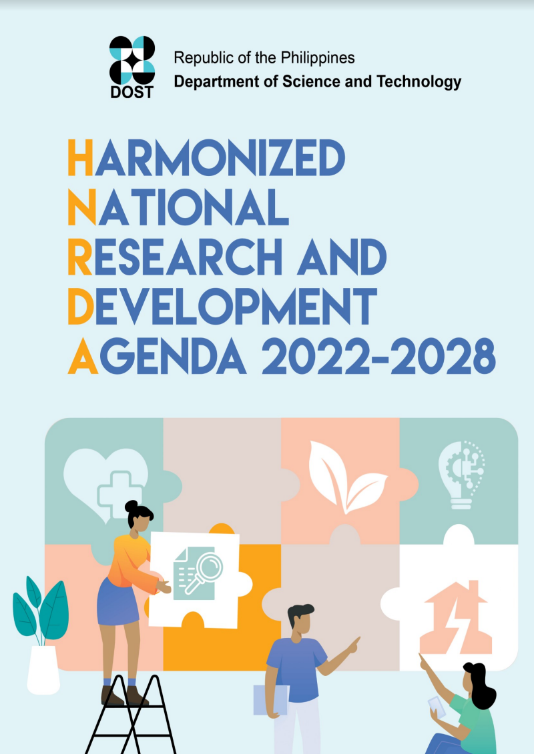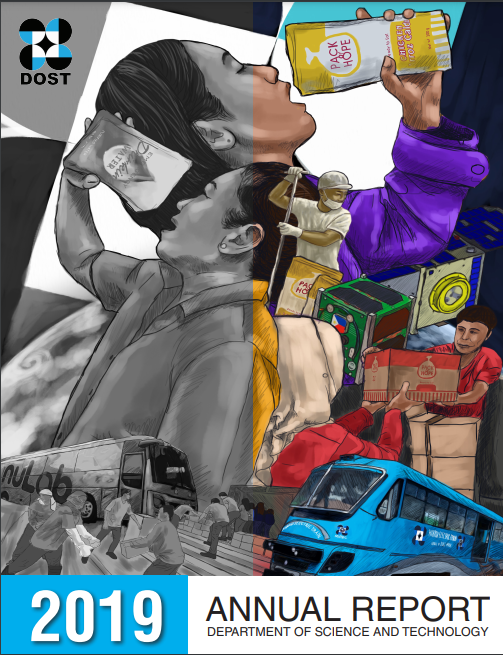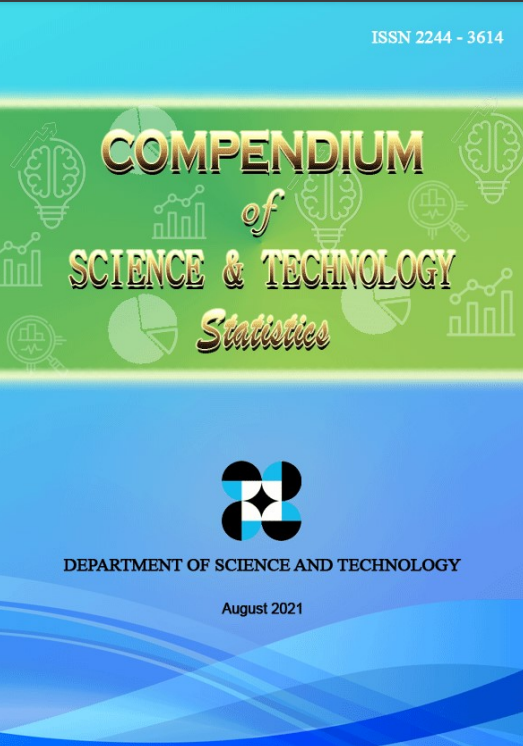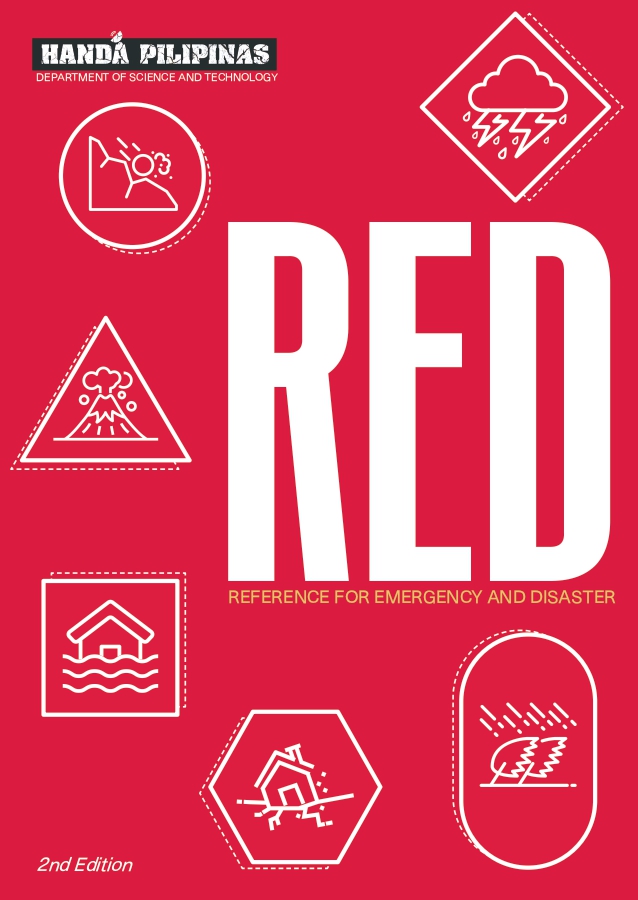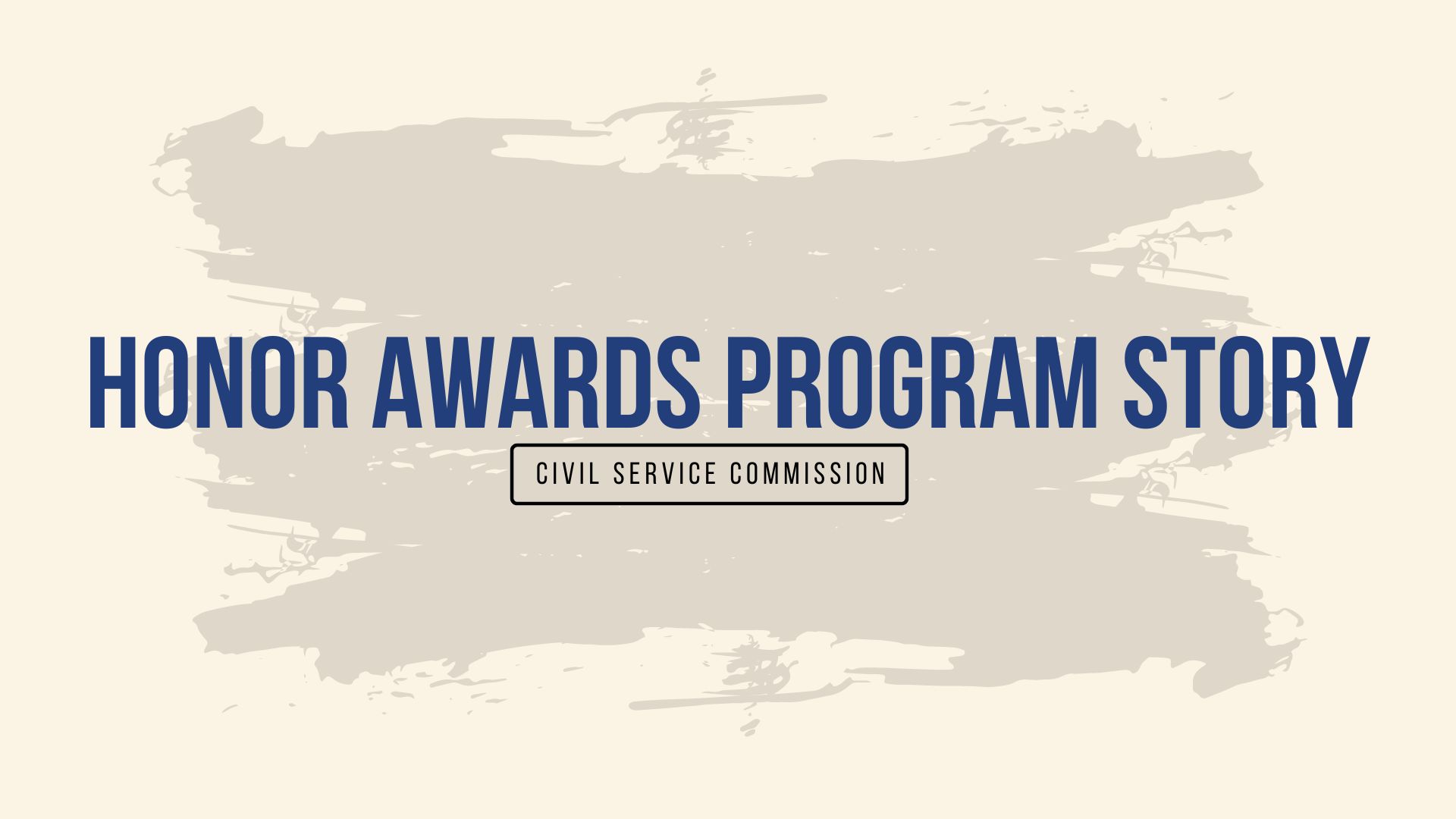DOST’s Project NOAH adopts Indonesian technology for disaster mitigation-Dealing with climate change today and in the future
- Details
- Hits: 3269
Normal 0 false false false EN-US X-NONE X-NONE
The Department of Science and Technology’s (DOST) Project NOAH (Nationwide Operational Assessment of Hazards) is adopting the disaster mitigating technology called InaSAFE from Indonesia.InaSAFE is an acronym for Indonesia Scenario Assessment for Emergency. It is an open source technology, which means it is free, readily accessed from the internet and may be modified by users. With this technology, data coming from weather scientists, local government units and the communities are gathered and consolidated to provide accurate information on future disaster events.
NOAH adopted Indonesis’s InaSAFE as it has a lot in common with the Philippines, especially in topography and natural hazards.
This was disclosed during the multi-stakeholder assembly titled “Enhancing Community Resilience Through the Use of New Technology” conducted by Project NOAH recently held at the Oracle Hotel in Quezon City.
Abigail Baca, disaster and risk management officer of the World Bank East Asia and Pacific Region said that InaSAFE proved effective during the recent floods in Jakarta, Indonesia and it can be applied in the Philippines.
Dr. Alfredo Francisco Mahar Lagmay of Project NOAH disclosed that InaSAFE will be integrated into Project NOAH to supplement existing technologies used to mitigate, if not totally prevent, massive destruction caused by strong typhoons similar to Sendong in 2011 and Pablo in December 2012.
During his presentation, Dr. Lagmay said, “It is important to develop information tools that will help centralize risk information at the NOAH website and make them available to a wider community.”
Since its launch in July 2012 in Marikina City, Project NOAH has continuously upgraded and strengthened its capability through installation of various weather forecasting equipment in various disaster-prone areas in the country. Among these are the Hydromet water level sensors and Doppler radars used to measure amount of rainfall in a specific area.
To date, there are 525 Hydromet sensors installed in different river systems including those in Tullahan River, Marikina River and San Juan River in Metro Manila. Likewise, the Project NOAH team has put up billboards in Pampanga showing flood maps to inform residents of the high-risk areas in their communities.
Further, Dr. Enrico C. Paringit, project leader of NOAH’s DREAM LiDAR (Disaster Risk and Exposure Assessment for Mitigation-Light Detection and Ranging) said, “ Since November 2012, we were able to do three-dimensional or 3D mapping of the Pampanga river basin, Agno River, Cagayan de Oro and Iligan. By the end of May this year, 3D mapping for Iloilo will be complete and next in line is the Panay river basin.”
DOST’s new fruit drinks to help cool down your summer
- Details
- Hits: 3699
The Department of Science and Technology’s Food and Nutrition Research Institute (DOST-FNRI) recently came up with natural fresh fruit drinks perfect for summer and beyond. Next to ice water, there is no better way to beat the tropical heat but drink fresh and nutritious fruit juices, au naturel!
The new concoctions come in two types: one as ready-to-drink fruit juices and another in concentrated form.
The ready-to-drink juice products are available in three flavors: guyabano-nata, ripe mango-nata, and green mango-nata.
The Guyabano-Nata Fruit drink is a mixture of sweetened nata de coco, natural guyabano juice, and sugar. Every 100 ml contains fruit fiber (2.1 g), vitamin C (134.6mg) and energy (139 Kcal).
Meanwhile, the Ripe Mango-Nata Fruit drink is a blend of ripe mango fruit juice, sweetened nata de coco, and sugar. One serving of 200 ml juice is equal to 55 percent Recommended Daily Allowance (RDA) for vitamin C and 7 percent RDA for energy for an adult male. Because of its nutritional content, the juice is ideal for the prevention and management of constipation, obesity, diabetes, and hypertension.
On the other hand, the Green Mango-Nata Fruit drink is an alternate variant of the Ripe Mango-Nata drink. It contains the same nutritional benefits as the ripe mango flavor. Every 100 ml has 130.22 mg vitamin C, 140 Kcal energy and 2 g fiber.
The juice type is available in 500 ml and one-liter bottles and has a shelf life of up to six months.
Meanwhile, the concentrated form has two variants, the Carrot-Pineapple and the Carrot-Mango, that come in 375 ml glass bottles. The juices can be stored up to a year at room temperatures between 28 to 32 degrees Celsius.
Both variants contain natural carrot juice and sugar as sweetener. These drinks are rich in B-carotene and vitamin A, thus increasing body resistance against infections and help facilitate fast recovery from illnesses. To prepare a 250 ml drink, one has to mix one part concentrate and one part water.
Beat the heat with DOST-FNRI’s healthy ice cream
- Details
- Hits: 7992
In the Philippines, hot, lazy afternoons are not complete without ice cream. But, sad to say, there is a portion of the population that shies away from this “sinful” dessert simply because they have hypertension or diabetes. So will these people have to suffer in silence and miss out the fun out of this tropical weather? Maybe not, with the Department of Science and Technology’s (DOST) incredible guilt-free ice cream.
Low in fat and sugar, but equally loaded with ice cream goodness, this healthy frozen delight is a developed by food experts at the DOST- Food and Nutrition Research Institute.
Based on the September 2008 data, a cup of this FNRI-developed ice cream at 100 grams contains only 0.46 grams of fat compared with other commercial brands with about 10.9 grams. Likewise, the FNRI formulation makes use of both ordinary and substitute sugar as sweetener at less than 0.1 gram per serving.
Further, the low-fat, low-sugar ice cream is priced much lower than the competition as it requires only P 1 million in capital investment, including the use of blast freezers used for quick freezing of food items.
Dairyman Ice Cream, a local food manufacturer based in Plaridel, Bulacan, has adopted this DOST-developed technology and innovative manufacturing process. Now, the company sells these products in selected outlets in the provinces and Metro Manila in four flavors: vanilla, ube, chocolate and buko pandan.
FNRI researchers Ma. Elena G. Fernandez, Wenefrida N. Lainez and Dahlia A. Diaz developed the formula, process and manufacturing technology.
So, when the heat is on, lick it up via a scoop or two of that delicious, creamy, low-fat, low-sugar ice cream.
For more information, please contact FNRI Director Mario V. Capanzana at telephone numbers 837-2934, 827-3164, 837-2071 local 2296 or send queries through email at This email address is being protected from spambots. You need JavaScript enabled to view it. and This email address is being protected from spambots. You need JavaScript enabled to view it.. You can also log on to the FNRI website at www.fnri.dost.gov.ph.
DOST-NAST eyes new strategies in educating the Alpha generation
- Details
- Hits: 10142
The National Academy of Science and Technology (NAST), an advisory body of the Department of Science and Technology (DOST) presented several policy recommendations to make education more attuned to the needs and personalities of today’s generation of young learners. Called the Alpha Generation, today’s learners are products of early schooling programs and tutorials, and weaned on advanced information and communication technologies such as the Internet and social media.
These modern environmental factors have helped reshape the psyche of these learners, thus requiring necessary changes in teaching and learning methods.
“There is no denying that today’s generation is very different from the one that we knew several years ago,” stated NAST President, Academician William G. Padolina, in his welcome remarks during the “Round Table Discussion (RTD) on Educating the Alpha Generation” recently organized by NAST’s Social Sciences Division at the Hyatt Hotel Manila. The RTD drew insights from respected members of the academe who presented the latest trends and research findings on educating Filipino youngsters aged 6-16.
Shifting to process-induced learning
One of the proposals was to shift from the more traditional teacher-induced learning methodology to process-induced learning or PIL.
The Central Visayan Institute Foundation (CVIF), a secondary school in the remote municipality of Jagna, Bohol has been implementing PIL since 2002 under its Dynamic Learning Program (DLP).
In her talk on “Experiences and Insights on Educating Generation Y and Z: A Springboard for Educating Generation Alpha,” Dr. Ma. Victoria Carpio-Bernido, CVIF principal, said that the school’s PIL program is anchored on improving learner disposition among its high school students.
This entails biological conditioning and habit formation activities, among others, according to Dr. Bernido. In CVIF, these are achieved by requiring students to record their activities and learning targets in their Activity Sheets every day.
“This is a daily protocol which serves as internal motivation for the learners. It is habit forming and their brain starts telling them that it’s time to learn. This will make them more prepared for the more rigorous work ahead in college,” explained Dr. Bernido, a renowned physicist and a 2010 Ramon Magsaysay awardee.
CVIF’s parallel classes scheme with limited teacher intervention likewise helps improve learner disposition. This means all sections in each year level are having the same subject periods at the same time. For example, all First Year classes are having Science subjects at the same time in the morning to conform with the students’ biological cycles.
In the case of Science being a difficult subject, scheduling the class in the morning would be ideal because at this time of the day, the students still have the physical and mental energy to deal with a complex subject.
During classes, expert teacher intervention is limited to only one-third or one-fourth of the whole subject period. The expert teacher refers to the subject teacher. For the rest of the period, only a facilitator is present. A facilitator could be a teacher of another subject.
“This strategy will give students more time to do independent work on standardized tasks and increase their attentiveness as well,” Dr. Bernido remarked. She explained further by saying that by the time the expert teacher comes in and takes over the class, the students will be more eager to listen to her discussion and therefore be more attentive.
Classes in CVIF have no introductory lectures for 70 to 80 percent of the time as well. Instead, independent learning activities – exercises and problem solving tasks, among others – are held immediately. This is opposed to common classroom practice where lectures and class discussions are held for 70 to 80 percent of the time.
The school also implements strategic study-rest periods and prohibits students from bringing home their projects. Homework is also not given in all subjects for all year levels. The reason for this, Dr. Bernido explained, is for the parents to make sure their kids are in bed early, instead of having them in front of their computers and pretending they are doing their assignments and school projects.
“If they are in bed early, they don’t have any reason to be sleepy in school. Instead, they will have enough energy for schoolwork the whole day,” said Dr. Bernido.
Aside from CVIF, 156 other public schools in Bohol have adopted PIL in their curriculum as well as in various primary and secondary schools in Cagayan de Oro, Zamboanga, Davao, Leyte, and Manila, among others.
More attention on science, math
Aside from addressing the unique needs of Alpha Generation, the program also hopes to achieve a more specific and localized objective: produce more qualified teachers in science, technology, engineering, and mathematics related disciplines or STEM, and increase the number of students enrolling in these courses.
“STEM have been observed to play a very dominant role in the economic development of countries,” said Dr. Bernido. “Government is focusing on these disciplines, but the reality is that there is a decline of qualified teachers as well as a decline in the number of students in these disciplines. So we go back to the question ‘Why is there a decline?,’” she elaborated.
One of the reasons, according to experts, is the general perception that these are difficult subjects. “Hence we try to address this through the curriculum that we implemented under the DLP which will improve the learner disposition, combined with a good STEM curriculum,” explained Dr. Bernido.
The need for kids to be resilient
Dr. Queena N. Lee-Chua, associate professor of Ateneo de Manila University’s Psychology Department, added that children need to build their resilience. “We need to develop them today. They also need at least one positive role. On the other hand, parents should challenge their kids to meet high expectations, find their individual strengths, encourage them, while avoiding hyper or under-parenting.”
Equally important, she said, is for parents to set goals with their kids, instead of setting their own goals for their kids without asking the latter about their plans.
“The challenge now is to guide learners situated in diverse local and global conditions to superior levels of performance in disciplines of their choice,” said Dr. Bernido.
“Being in the early years of the generation, many of the current trends are unprecedented. If we are expecting a better future, then something must be done in the education system of the Alpha Generation to properly guide the youth in their journey,” Padolina declared.













